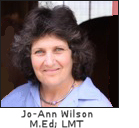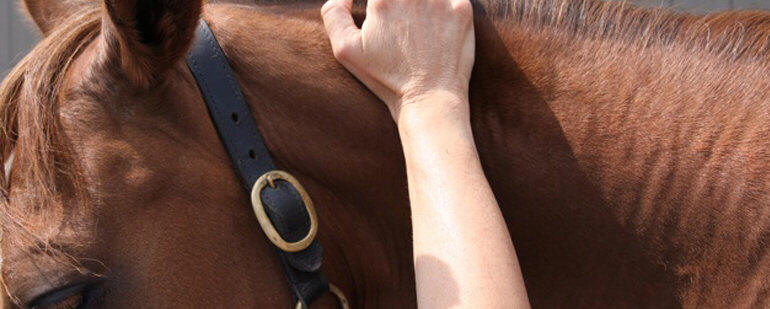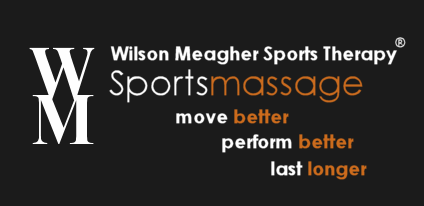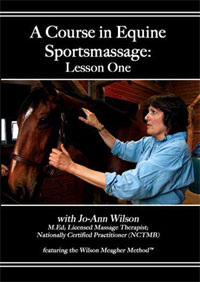|
 Welcome! Welcome!
This newsletter is all about how to help you
help your horse, move better, last longer and prevent injury.
Enjoy

CONFORMATION AND MOVEMENT AS FORM AND FUNCTION:
Does Good Conformation lead to Good movement??
Not necessarily. Let’s take a look at why.
 Conformation
known as form, is the skeletal system made up of bones and joints. The
bones and joints must be located at specific angles. Different angles
such as hip, shoulder or pastern angle create different degrees of movement
in the horse’s body. The bones are the back drop for the muscles. Muscles
move the bones, contributing to the musculoskeletal system responsible
for movement. However, there is a very important neurological system
hidden from our view that is ultimately responsible for good movement
supporting good performance. The system is similar to the electrical
system in all of our homes that works to allow all of the appliances
to function in perfect order. It is similar to the perfect timing and
synchronization of the pistons in the engine of our cars, so the Conformation
known as form, is the skeletal system made up of bones and joints. The
bones and joints must be located at specific angles. Different angles
such as hip, shoulder or pastern angle create different degrees of movement
in the horse’s body. The bones are the back drop for the muscles. Muscles
move the bones, contributing to the musculoskeletal system responsible
for movement. However, there is a very important neurological system
hidden from our view that is ultimately responsible for good movement
supporting good performance. The system is similar to the electrical
system in all of our homes that works to allow all of the appliances
to function in perfect order. It is similar to the perfect timing and
synchronization of the pistons in the engine of our cars, so the
 engine
runs smoothly. This intriguing neurological system is called proprioception.
This is the neuro-muscular process by which the body synchronizes itself
into the proper sequence of motions. It basically let’s the body know
where its limb’ s are in space through proprioceptors which are tiny
neurological sensory receptors that provide information about joint
angle, muscle length, and muscle tension. It is what synchronizes movement
into perfect timing. It is what makes a great dressage horse dance fluidly.
It is what makes a top cutting horse slice impeccably through an arena... engine
runs smoothly. This intriguing neurological system is called proprioception.
This is the neuro-muscular process by which the body synchronizes itself
into the proper sequence of motions. It basically let’s the body know
where its limb’ s are in space through proprioceptors which are tiny
neurological sensory receptors that provide information about joint
angle, muscle length, and muscle tension. It is what synchronizes movement
into perfect timing. It is what makes a great dressage horse dance fluidly.
It is what makes a top cutting horse slice impeccably through an arena...
Read more about proprioception
and why it is important to your horses' movement


CASE STUDY:
Refusing to pick up the correct lead at the canter. Shortened stride
in front.
Presenting Problem:
 I
received a call from a very worried client. She just purchased her new
horse 3 weeks ago and recently, she was unable to get her horse to pick
up the left lead at the canter. As a result, the horse would not do
a proper lead change. I asked if her horse was lame. She didn’t think
he was weight bearing lame. Therefore she didn’t call a vet first. She
wanted to rule out simple muscle tightness as the reason for the new
problem. I appreciated her worry since she just purchased the horse
and she was fearful that there might be a deeper problem that was not
picked up during the pre purchase vetting. I thought it might be kind
to inject a bit of humor to try to calm her nerves, so I told her my
father’s old saying: “Worrying is using your imagination to create what
you don’t want”! I
received a call from a very worried client. She just purchased her new
horse 3 weeks ago and recently, she was unable to get her horse to pick
up the left lead at the canter. As a result, the horse would not do
a proper lead change. I asked if her horse was lame. She didn’t think
he was weight bearing lame. Therefore she didn’t call a vet first. She
wanted to rule out simple muscle tightness as the reason for the new
problem. I appreciated her worry since she just purchased the horse
and she was fearful that there might be a deeper problem that was not
picked up during the pre purchase vetting. I thought it might be kind
to inject a bit of humor to try to calm her nerves, so I told her my
father’s old saying: “Worrying is using your imagination to create what
you don’t want”!
I reassured her that this is a common muscular
problem and if it was simple muscle tightness, I would be able to restore
the motion immediately.
Problem Solving:
Since I was evaluating muscle function, I asked
my client to lead the horse at the walk away from me and then toward
me in a straight line. I get the best view of muscle function at the
walk. The horse was more labored and shorter in his left shoulder and
was also shorter in the right hind. When I say labored, I mean that it appeared harder for the horse to bring his left shoulder forward,
resulting in a shortened stride in the left front leg. I assumed that
the right hind shortness was compensatory for the left shoulder. Since
the dynamics of motion occur on a diagonal, the left shoulder and right
hind would be the effected diagonal pair...
that it appeared harder for the horse to bring his left shoulder forward,
resulting in a shortened stride in the left front leg. I assumed that
the right hind shortness was compensatory for the left shoulder. Since
the dynamics of motion occur on a diagonal, the left shoulder and right
hind would be the effected diagonal pair...
Read more about
the problem, cause, and solution


OLYMPIC TRAINING SESSIONS
|
 The
training sessions for the United States and Canada Equestrian
Team’s in 3 Day Eventing have begun. The sessions are intended
to support and train qualified horse’s and riders who have been
chosen to be on a list heading for the 2012 Olympics in London
England. The
training sessions for the United States and Canada Equestrian
Team’s in 3 Day Eventing have begun. The sessions are intended
to support and train qualified horse’s and riders who have been
chosen to be on a list heading for the 2012 Olympics in London
England.
|
|
(click
photo to zoom in) |
 Five horses and riders will be named in early summer from the
list to make up the teams going to the Olympic Games. The opening
ceremonies for the Olympics will be held July 27th. It is a
very exciting time in preparation for the Games. Five horses and riders will be named in early summer from the
list to make up the teams going to the Olympic Games. The opening
ceremonies for the Olympics will be held July 27th. It is a
very exciting time in preparation for the Games.
|
|
(click
photo to zoom in) |
|
 Several
training sessions for both the US and Canada are occurring at
O’Connor Equestrian, Meredyth South, in Ocala Florida. Both
countries riders and horses are seen simultaneously training
with their respective coaches. David O”Connor is the coach for
the Canadian Eventing Team and Captain Mark Phillips is the
coach for the United States Eventing Team. Several
training sessions for both the US and Canada are occurring at
O’Connor Equestrian, Meredyth South, in Ocala Florida. Both
countries riders and horses are seen simultaneously training
with their respective coaches. David O”Connor is the coach for
the Canadian Eventing Team and Captain Mark Phillips is the
coach for the United States Eventing Team.
|
|
(click
photo to zoom in) |
|
|
|
|

TRAINER'S TIP


Trainer: Barend Heilbron, originally
from Holland, owner of Capstone Farm in Madbury NH, USA, is a
longstanding horseman, rider and trainer of all levels of dressage
horses.
Question: Since you live and train
year round in southern New Hampshire, USA which is a cold climate in
the winter, will you offer your comments and guidelines on
training and maintaining a fitness level for horses during cold
weather conditions?
Read
Barend's answer


RIDER'S TIP

The Benefits of Eating Breakfast

We all make sure our horses are fed and watered
in the morning before we consider starting their day. It is unusual
to train a horse, or even compete without feeding them breakfast. We
hold the care of our horses to a high standard, but does the same standard
apply to the rider, or horse owner? I'm not so sure.
Breakfast is one of the most important meals
of our day, yet we often find ourselves neglecting to fuel our bodies
and minds properly before we begin our work and chores. The meaning
of the word "breakfast" is to break the fast between dinner and the
meal eaten after a person wakes up the next morning.
These are busy times. Many of us are multi
tasking and tend to grab a cup of coffee and a yogurt or power bar,
or just a diet coke before or after we feed our horses a well
balanced meal. Here is a really good link titled "Top
10 Benefits of Eating Breakfast". Check it out. I found it a very
helpful list of reasons to eat a nutritious breakfast, since I am one
of the guilty breakfast breezer’s.
I also welcome you to check out an article I
wrote for the Chronicle of The Horse in 2009 titled "Who
Cares About the Rider". You may click on the link below for the
article. The article appears at the top of the page listed under Chronicle
of Horse.
|
|


 Welcome!
Welcome! Conformation
known as form, is the skeletal system made up of bones and joints. The
bones and joints must be located at specific angles. Different angles
such as hip, shoulder or pastern angle create different degrees of movement
in the horse’s body. The bones are the back drop for the muscles. Muscles
move the bones, contributing to the musculoskeletal system responsible
for movement. However, there is a very important neurological system
hidden from our view that is ultimately responsible for good movement
supporting good performance. The system is similar to the electrical
system in all of our homes that works to allow all of the appliances
to function in perfect order. It is similar to the perfect timing and
synchronization of the pistons in the engine of our cars, so the
Conformation
known as form, is the skeletal system made up of bones and joints. The
bones and joints must be located at specific angles. Different angles
such as hip, shoulder or pastern angle create different degrees of movement
in the horse’s body. The bones are the back drop for the muscles. Muscles
move the bones, contributing to the musculoskeletal system responsible
for movement. However, there is a very important neurological system
hidden from our view that is ultimately responsible for good movement
supporting good performance. The system is similar to the electrical
system in all of our homes that works to allow all of the appliances
to function in perfect order. It is similar to the perfect timing and
synchronization of the pistons in the engine of our cars, so the
 engine
runs smoothly. This intriguing neurological system is called proprioception.
This is the neuro-muscular process by which the body synchronizes itself
into the proper sequence of motions. It basically let’s the body know
where its limb’ s are in space through proprioceptors which are tiny
neurological sensory receptors that provide information about joint
angle, muscle length, and muscle tension. It is what synchronizes movement
into perfect timing. It is what makes a great dressage horse dance fluidly.
It is what makes a top cutting horse slice impeccably through an arena...
engine
runs smoothly. This intriguing neurological system is called proprioception.
This is the neuro-muscular process by which the body synchronizes itself
into the proper sequence of motions. It basically let’s the body know
where its limb’ s are in space through proprioceptors which are tiny
neurological sensory receptors that provide information about joint
angle, muscle length, and muscle tension. It is what synchronizes movement
into perfect timing. It is what makes a great dressage horse dance fluidly.
It is what makes a top cutting horse slice impeccably through an arena...
 I
received a call from a very worried client. She just purchased her new
horse 3 weeks ago and recently, she was unable to get her horse to pick
up the left lead at the canter. As a result, the horse would not do
a proper lead change. I asked if her horse was lame. She didn’t think
he was weight bearing lame. Therefore she didn’t call a vet first. She
wanted to rule out simple muscle tightness as the reason for the new
problem. I appreciated her worry since she just purchased the horse
and she was fearful that there might be a deeper problem that was not
picked up during the pre purchase vetting. I thought it might be kind
to inject a bit of humor to try to calm her nerves, so I told her my
father’s old saying: “Worrying is using your imagination to create what
you don’t want”!
I
received a call from a very worried client. She just purchased her new
horse 3 weeks ago and recently, she was unable to get her horse to pick
up the left lead at the canter. As a result, the horse would not do
a proper lead change. I asked if her horse was lame. She didn’t think
he was weight bearing lame. Therefore she didn’t call a vet first. She
wanted to rule out simple muscle tightness as the reason for the new
problem. I appreciated her worry since she just purchased the horse
and she was fearful that there might be a deeper problem that was not
picked up during the pre purchase vetting. I thought it might be kind
to inject a bit of humor to try to calm her nerves, so I told her my
father’s old saying: “Worrying is using your imagination to create what
you don’t want”!  that it appeared harder for the horse to bring his left shoulder forward,
resulting in a shortened stride in the left front leg. I assumed that
the right hind shortness was compensatory for the left shoulder. Since
the dynamics of motion occur on a diagonal, the left shoulder and right
hind would be the effected diagonal pair...
that it appeared harder for the horse to bring his left shoulder forward,
resulting in a shortened stride in the left front leg. I assumed that
the right hind shortness was compensatory for the left shoulder. Since
the dynamics of motion occur on a diagonal, the left shoulder and right
hind would be the effected diagonal pair...




